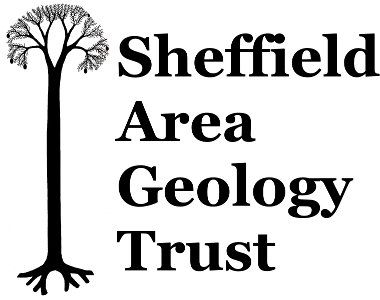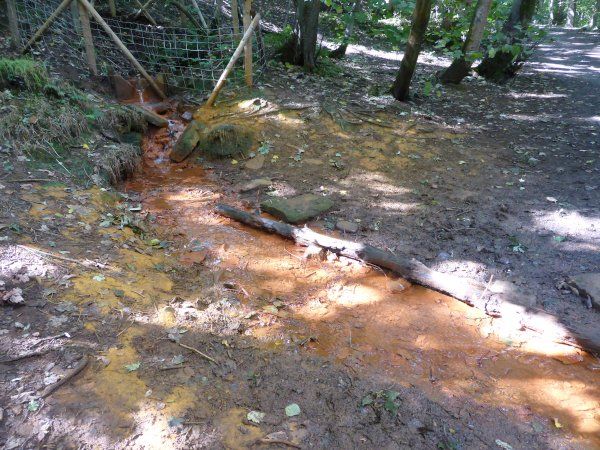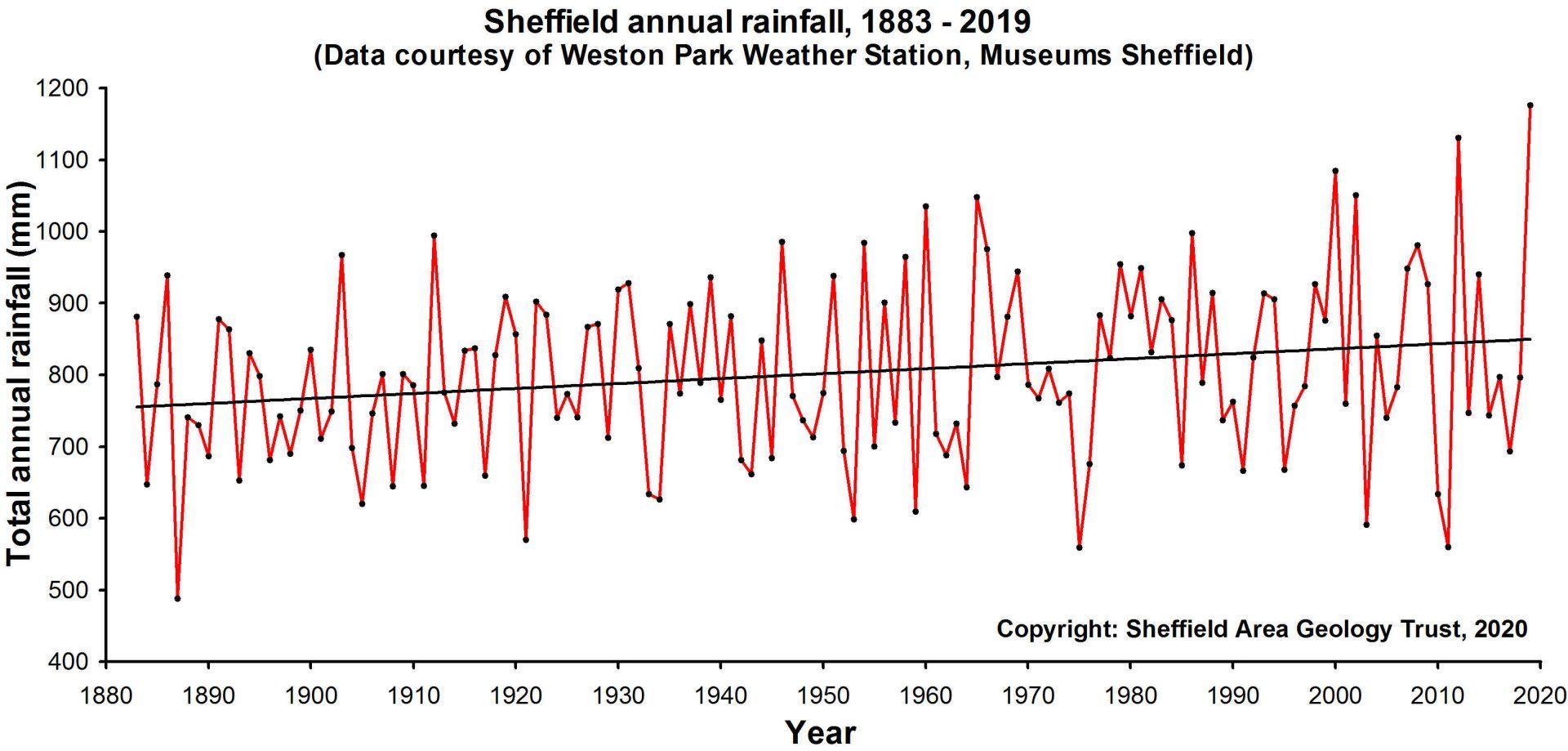2020 News Archive
Recording, conserving and promoting the landscape and rocks of the Sheffield region
SAGT News Archive 2020
RIGS inspection - 3 September 2020
A Covid-secure group of 6 SAGT members checked on a RIGS site in Ryecroft Glen in the Limb Valley on 3rd September and cleaned up a small section of river bank to reveal about a metre of ganister/fireclay, overlain by the Hard Bed Coal, only a few centimetres thick. The associated Listeri Marine Band was not located on this visit. The ground beside the Round Walk track is marked by a line of several deep hollows, each with a surrounding mound of overgrown spoil, marking former attempts to extract the ganister and coal at shallow depth. Ochre-stained water emerges at several points in the valley, notably where drainage from the former Moss Colliery, on the site of the picnic area off Limb Lane, emerges from a large pipe.
Science Week investigations - March 2020
Just before the lockdown came into effect, a SAGT member was able to lead three investigations into the geology of gravestones for Science Week. On 12th March, a class of Y8 pupils from Oakwood High School, Rotherham surveyed a wide range of rock types used for gravestones in Boston Park Cemetery, and also appreciated the influence of the Rotherham Red Sandstone in forming the prominent scarp feature on which their school is sited, as they walked along it to the cemetery, in a very strong wind.
On Saturday 14th March a family of three signed up for a public event in Ecclesall Churchyard, accompanied by a reporter, to whom we are grateful for the photograph, and also for his accurate reporting in the Sheffield Telegraph.
On Monday 16th, the increasing awareness of the Corona virus precluded the usual visit to the school to prepare for a visit, so a class of Y3 pupils from Mylnhurst R.C. Primary School gathered around a convenient flat grave slab in the open air for their briefing, before working enthusiastically in small groups to identify the rock types and their response to weathering. They discovered that the oldest gravestones, dating back to the 1790s were all of local Coal Measures sandstones, and that exotic stones such as granites and marble only came into use after transport improved with the coming of the canal and the railways in the early 19th Century. Soon after their visit to the churchyard the schools were closed, so perhaps the children evaded the writing-up!
2019 Rainfall records broken
In the second half of 2019, there were few opportunities for SAGT members to make field visits, mostly because it never seemed to stop raining. The annual weather statistics from the Weston Park Weather Station have now been compiled and these have confirmed that – yes indeed - Sheffield experienced its highest annual rainfall total since systematic record-keeping began in mid-1882. The autumn season (September – November) and the entire month of November were also the wettest on record for these sub-intervals. In contrast, for example, last year was the hottest and driest on record in Australia.
Furthermore, if the entire historic annual rainfall dataset for Sheffield is plotted as a time-series graph, then a long-term trend of slowly-increasing average annual rainfall is apparent. This is shown on the graph below as a linear regression (black line), increasing from approximately 750 mm/y at the end of the nineteenth century, to approximately 800 mm/y at the present time. This average line, of course, ignores the normal year-to-year fluctuations in rainfall which, in the last two decades, have exhibited more extreme values. The long-term trend is confirmed if these data are plotted as a continuous cumulative rainfall graph, instead of individual annual values. The resulting graph is a subtle, but almost perfect quadratic polynomial curve.
The cause of this increasing rainfall trend for Sheffield is not known. It may not be replicated in other parts of this country, let alone in other parts of the world. Is it part of a ‘natural’ climate cycle, or is this evidence of an impact caused by human beings? The Earth’s climate is a complicated and incompletely-understood system. Geological evidence shows that the Earth has experienced repeated climatic changes and extremes throughout its history, and the patterns in the two hemispheres can be quite different. In the last two and a half million years there have been several ice-ages and we are currently living in an inter-glacial period (the ‘Holocene’).
Since the beginning of the Holocene Period, approximately 12,000 years ago, the Earth’s temperature has been relatively stable (there is less information on rainfall). Nevertheless, different parts of the world have experienced subtle climate cycles, such as the drying-out of the Sahara, around 4000 years ago. Within the last thousand years, average temperatures were slightly higher in the Medieval Period, while the seventeenth to nineteenth centuries were colder, including the ‘Little Ice Age’, when the River Thames froze in wintertime.
One of the important factors that affects the Earth’s climate is the concentration of carbon dioxide in the atmosphere. Throughout the Holocene Period this had remained within a narrow range of 260-280 parts per million (ppm). From the 1850s, however, it began to increase as a consequence of human population expansion and industrial activity. In early January 2020, the concentration of atmospheric CO2
was measured at 413 ppm (see: https://www.co2.earth/daily-co2). This is a value not recorded on Earth since the end of the Pliocene Period, three million years ago. The rate and magnitude of this increase (in a geological sense) far exceeds the natural fluctuations in atmospheric CO2
that accompanied the freezing and thawing cycles of the Ice Ages.
Acknowledgement:
SAGT is grateful to Weston Park Weather Station, Museums Sheffield for providing the rainfall data and for granting permission for it to be presented on this news page.
Sources:
Boon, G. and Middleton, A., 2011. Sheffield’s Weather. Sorby Record Special Series No.16.
Zalasiewicz, J. and Williams, M., 2013. The Goldilocks Planet.
email: sageologytrust@gmail.com
Copyright: Sheffield Area Geology Trust. Registered Charity No. 1133465, England





